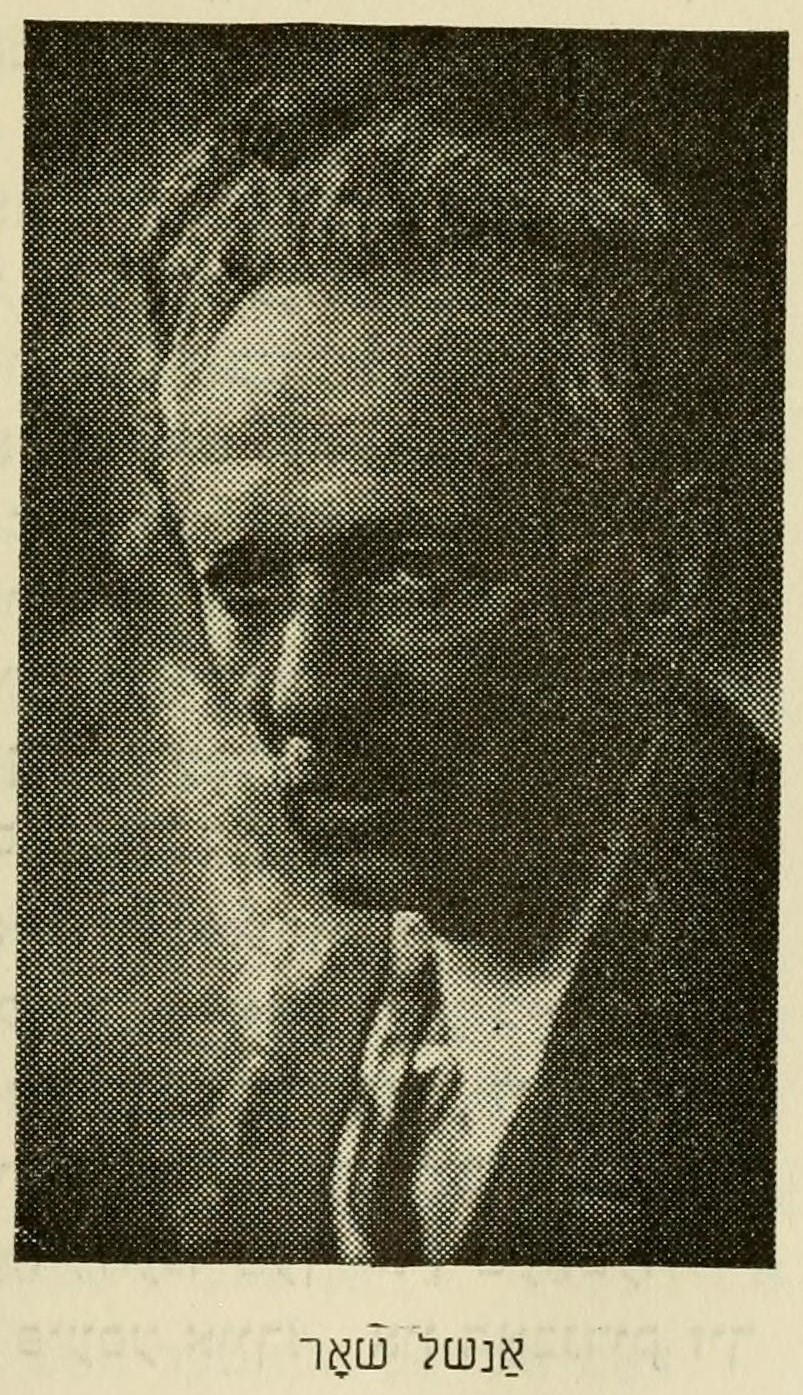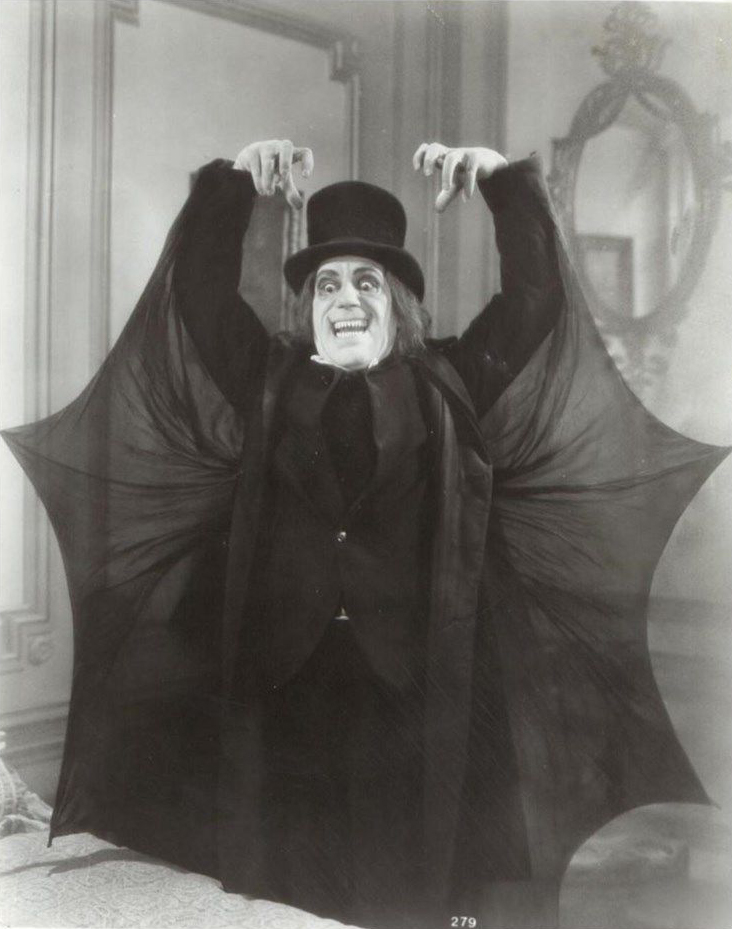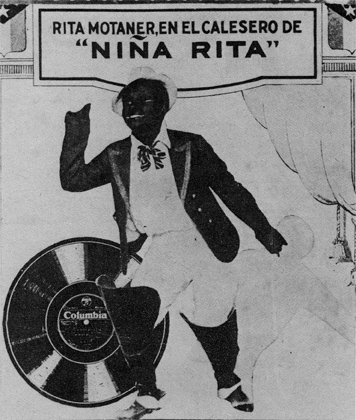|
Shir Hashirim (film)
''Shir Hashirim'' ("Song of Songs") is a 1935 lost film, lost Yiddish-language film. Cast * Samuel Goldenberg (actor), Samuel Goldenberg * Dora Weissman * Anna Toback * Mierele Gruber Production and release The film is based on the ''Shir Hashirim'' ("Song of Songs") operetta by Joseph Rumshinsky and Anshel Schorr. The low-budget Yiddish talkie, directed by Henry Lynn, intersperses English-language titles with the spoken dialogue. It was the first of six Yiddish films Lynn had been signed by the Empire Film Company to make. ''Variety (magazine), Variety'' estimated that the film cost ten to fifteen thousand dollars to produce. The film premiered in October 1935 and has since lost film, been lost. It showed at New York's Acme Theatre in Union Square (New York), Union Square. ''Variety'' reported that the Acme's run lasted four days. Reception ''Variety'' Wolfe Kaufman, after disparaging the whole of Yiddish film, wrote that the film's director was unworthy of the job. ... [...More Info...] [...Related Items...] OR: [Wikipedia] [Google] [Baidu] |
Henry Lynn
Henry Lynn (July 21, 1895 – August 25, 1984) was a film director, screenwriter, and film producer, producer, who concentrated on Yiddish life and culture in the United States in the years 1932–1939, the era of Yiddish film in America. Lynn was an innovator in sound technology, frequently commissioned original music, and he used popular radio and opera stars Boris Thomashefsky, Esther Field, and Seymour Rexite, as well as New York stage actors like Celia Adler. Biography Lynn was born in the region of Białystok, then Russian Empire, now in Poland. Frustrated by difficulties of obtaining an education in Białystok, he emigrated to America, arriving in Boston in 1914. Initially, he taught languages in Boston and suburbs, Dorchester, Massachusetts, Dorchester, Lynn, Massachusetts, Lynn, and Revere, Massachusetts, Revere. Later he moved to New York City where he taught Hebrew and Russian, then became a film producer/director/writer, 1932-1939. During WWII Lynn created a busines ... [...More Info...] [...Related Items...] OR: [Wikipedia] [Google] [Baidu] |
Shir Hashirim (operetta)
Anshel Schorr (; October 25, 1871 – May 31, 1942), also known by the anglicized name Albert Schorr, was an Austria-Hungary, Austrian-born United States, American playwright, lyricist, theater manager and composer active in the Yiddish Theatre of the early twentieth century. He worked with many of the famous figures of that era including Joseph Rumshinsky, Arnold Perlmutter, Molly Picon, Jacob P. Adler, and David Kessler (actor), David Kessler, and wrote or co-wrote more than fifty plays and operettas which were widely performed in Europe and the Americas. His songs were recorded by contemporary artists such as Pepi Litman, Pesach Burstein, Mordechai Hershman and Simon Paskal. His wife, Dora Weissman, was also a well-known Yiddish theatre actor. Biography Early life Anshel Schorr was born in Zolochiv, Lviv Oblast, Zolochiv, Galicia (Eastern Europe), Galicia, Austria-Hungary on October 25, 1871. His father, Zallel Schorr, was a follower of Hasidic Judaism and a Melamed and his moth ... [...More Info...] [...Related Items...] OR: [Wikipedia] [Google] [Baidu] |
Anshel Schorr
Anshel Schorr (; October 25, 1871 – May 31, 1942), also known by the anglicized name Albert Schorr, was an Austrian-born American playwright, lyricist, theater manager and composer active in the Yiddish Theatre of the early twentieth century. He worked with many of the famous figures of that era including Joseph Rumshinsky, Arnold Perlmutter, Molly Picon, Jacob P. Adler, and David Kessler, and wrote or co-wrote more than fifty plays and operettas which were widely performed in Europe and the Americas. His songs were recorded by contemporary artists such as Pepi Litman, Pesach Burstein, Mordechai Hershman and Simon Paskal. His wife, Dora Weissman, was also a well-known Yiddish theatre actor. Biography Early life Anshel Schorr was born in Zolochiv, Galicia, Austria-Hungary on October 25, 1871. His father, Zallel Schorr, was a follower of Hasidic Judaism and a Melamed and his mother was named Rachel Perlmutter. The family relocated to Lviv when Anshel was 6 years old. He ... [...More Info...] [...Related Items...] OR: [Wikipedia] [Google] [Baidu] |
Joseph Rumshinsky
Joseph Rumshinsky (1881–1956) was a Jewish composer born near Vilna, Lithuania (then part of Russian Poland). Along with Sholom Secunda, Alexander Olshanetsky and Abraham Ellstein, he is considered one of the "big four" composers and conductors of American Yiddish theater.Joseph Rumshinsky . Milken Archive of Jewish Music. milkenarchive.org. Retrieved 2016-12-13. 
Biography Joseph Rumshinsky's mother taught singing to local singers and badkhonim (wedding entertainers). As a child, he studied with a cantor. At the age o ...[...More Info...] [...Related Items...] OR: [Wikipedia] [Google] [Baidu] |
Samuel Goldenberg (actor)
Samuel Goldenberg (1883/1884–1945) was an actor in Yiddish theatre on stage and screen. Career Goldenberg worked as a tailor before becoming a leading Yiddish-language actor-singer-pianist. He was known to incorporate piano solos into dramatic scenes, such as the gimmick of hiding a piano behind tombstones props to raise music from the dead. Goldenberg's performances included the title role in the Yiddish Art Theatre's '' Jew Suess'', Svengali in ''Trilby'', and ''Dr. Jekyll and Mr. Hyde''. He also appeared in English-language Broadway productions. His English-language roles, included in the Theatre Guild's ''American Dream'', '' The Eternal Road'', and ''The Cherry Orchard''. He headlined the 1935 Yiddish film '' Shir Hashirim'' (''Song of Songs''), which ran in the Union Square Acme Theatre. ''The New York Times'' described his performance as effective. He played in Yiddish road shows. In early 1922, his five-week engagement with the Yiddish Toronto National Company, w ... [...More Info...] [...Related Items...] OR: [Wikipedia] [Google] [Baidu] |
Lost Film
A lost film is a feature film, feature or short film in which the original negative or copies are not known to exist in any studio archive, private collection, or public archive. Films can be wholly or partially lost for a number of reasons. Early films were not thought to have value beyond their theatrical run, so many were discarded afterward. Nitrate film used in early pictures was highly flammable and susceptible to degradation. The Library of Congress began acquiring copies of American films in 1909, but not all were kept. Due to improvements in film technology and recordkeeping, few films produced in the 1950s or beyond have been lost. Rarely, but occasionally, films classified as lost are found in an uncataloged or miscataloged archive or private collection, becoming "rediscovered films". Conditions During most of the 20th century, American copyright law required at least one copy of every American film to be deposited at the Library of Congress at the time of copyri ... [...More Info...] [...Related Items...] OR: [Wikipedia] [Google] [Baidu] |
Yiddish-language
Yiddish, historically Judeo-German, is a West Germanic language historically spoken by Ashkenazi Jews. It originated in 9th-century Central Europe, and provided the nascent Ashkenazi community with a vernacular based on High German fused with many elements taken from Hebrew language, Hebrew (notably Mishnaic Hebrew, Mishnaic) and to some extent Aramaic. Most varieties of Yiddish include elements of Slavic languages and the vocabulary contains traces of Romance languages.Aram Yardumian"A Tale of Two Hypotheses: Genetics and the Ethnogenesis of Ashkenazi Jewry".University of Pennsylvania. 2013. Yiddish has traditionally been written using the Hebrew alphabet. Prior to World War II, there were 11–13 million speakers. 85% of the approximately 6 million Jews who were murdered in the Holocaust were Yiddish speakers,Solomon Birnbaum, ''Grammatik der jiddischen Sprache'' (4., erg. Aufl., Hamburg: Buske, 1984), p. 3. leading to a massive decline in the use of the language. Jewish ass ... [...More Info...] [...Related Items...] OR: [Wikipedia] [Google] [Baidu] |
Operetta
Operetta is a form of theatre and a genre of light opera. It includes spoken dialogue, songs and including dances. It is lighter than opera in terms of its music, orchestral size, and length of the work. Apart from its shorter length, the operetta is usually of a light and amusing character. The subject matter may portray "lovers' spats, mistaken identities, sudden reversals of fortune, and glittering parties". It sometimes also includes satirical commentaries. "Operetta" is the Italian diminutive of "opera" and was used originally to describe a shorter, perhaps less ambitious work than an opera. Operetta provides an alternative to operatic performances in an accessible form targeting a different audience. Operetta became a recognizable form in the mid-19th century in France, and its popularity led to the development of many national styles of operetta. Distinctive styles emerged across countries including Austria-Hungary, Germany, England, Spain, the Philippines, Mexico, Cuba, ... [...More Info...] [...Related Items...] OR: [Wikipedia] [Google] [Baidu] |
The Hollywood Reporter
''The Hollywood Reporter'' (''THR'') is an American digital and print magazine which focuses on the Cinema of the United States, Hollywood film industry, film, television, and entertainment industries. It was founded in 1930 as a daily trade paper, and in 2010 switched to a weekly Wide-format printer, large-format print magazine with a revamped website. As of 2020, the day-to-day operations of the company are handled by Penske Media Corporation through a joint venture with Eldridge Industries. The magazine also sponsors and hosts major industry events. History Foundation and early years ''The Hollywood Reporter'' was founded in 1930 by William R. Wilkerson, William R. "Billy" Wilkerson (1890–1962) as Hollywood's first daily entertainment trade newspaper. The first edition appeared on September 3, 1930, and featured Wilkerson's front-page "Tradeviews" column, which became influential. The newspaper appeared Monday-to-Saturday for the first 10 years, except for a brief period, t ... [...More Info...] [...Related Items...] OR: [Wikipedia] [Google] [Baidu] |
Variety (magazine)
''Variety'' is an American trade magazine owned by Penske Media Corporation. It was founded by Sime Silverman in New York City in 1905 as a weekly newspaper reporting on theater and vaudeville. In 1933, ''Daily Variety'' was launched, based in Los Angeles, to cover the film industry, motion-picture industry. ''Variety'' website features entertainment news, reviews, box office results, plus a credits database, production charts and film calendar. History Founding ''Variety'' has been published since December 16, 1905, when it was launched by Sime Silverman as a weekly periodical covering theater and vaudeville, with its headquarters in New York City. Silverman had been fired by ''The Morning Telegraph'' in 1905 for panning an act which had taken out an advert for $50. He subsequently decided to start his own publication that, he said, would "not be influenced by advertising." With a loan of $1,500 from his father-in-law, he launched ''Variety'' as publisher and editor. In additi ... [...More Info...] [...Related Items...] OR: [Wikipedia] [Google] [Baidu] |
Union Square (New York)
Union Square is a historic intersection and surrounding neighborhood in Manhattan, New York City, United States, located where Broadway and the former Bowery Road – now Fourth Avenue – came together in the early 19th century. Its name denotes that "here was the union of the two principal thoroughfares of the island". The current Union Square Park is bounded by 14th Street on the south, 17th Street on the north, and Union Square West and Union Square East to the west and east respectively. 17th Street links together Broadway and Park Avenue South on the north end of the park, while Union Square East connects Park Avenue South to Fourth Avenue and the continuation of Broadway on the park's south side. The park is maintained by the New York City Department of Parks and Recreation. Adjacent neighborhoods are the Flatiron District to the north, Chelsea to the west, Greenwich Village to the southwest, East Village to the southeast, and Gramercy Park to the east. ... [...More Info...] [...Related Items...] OR: [Wikipedia] [Google] [Baidu] |






